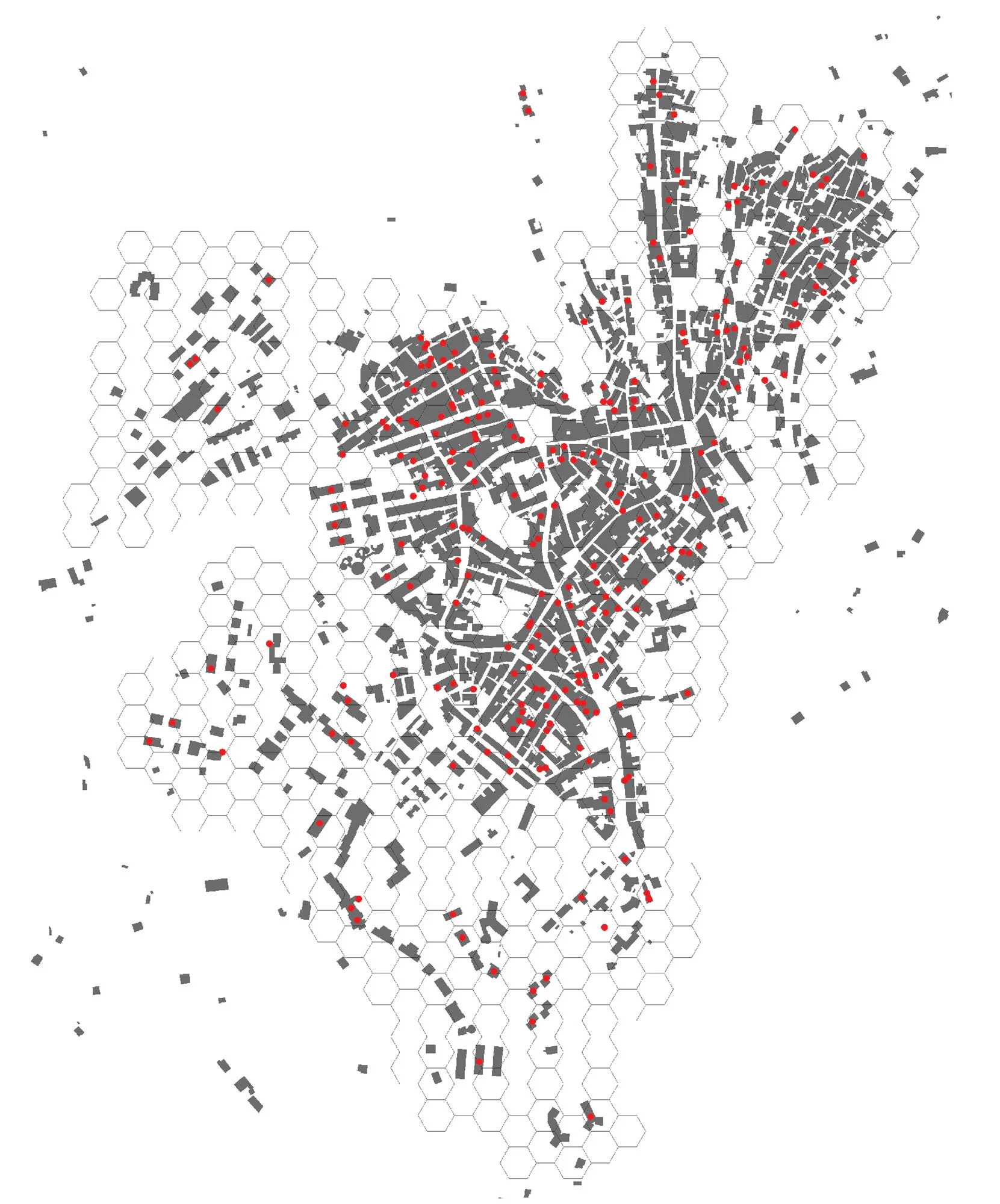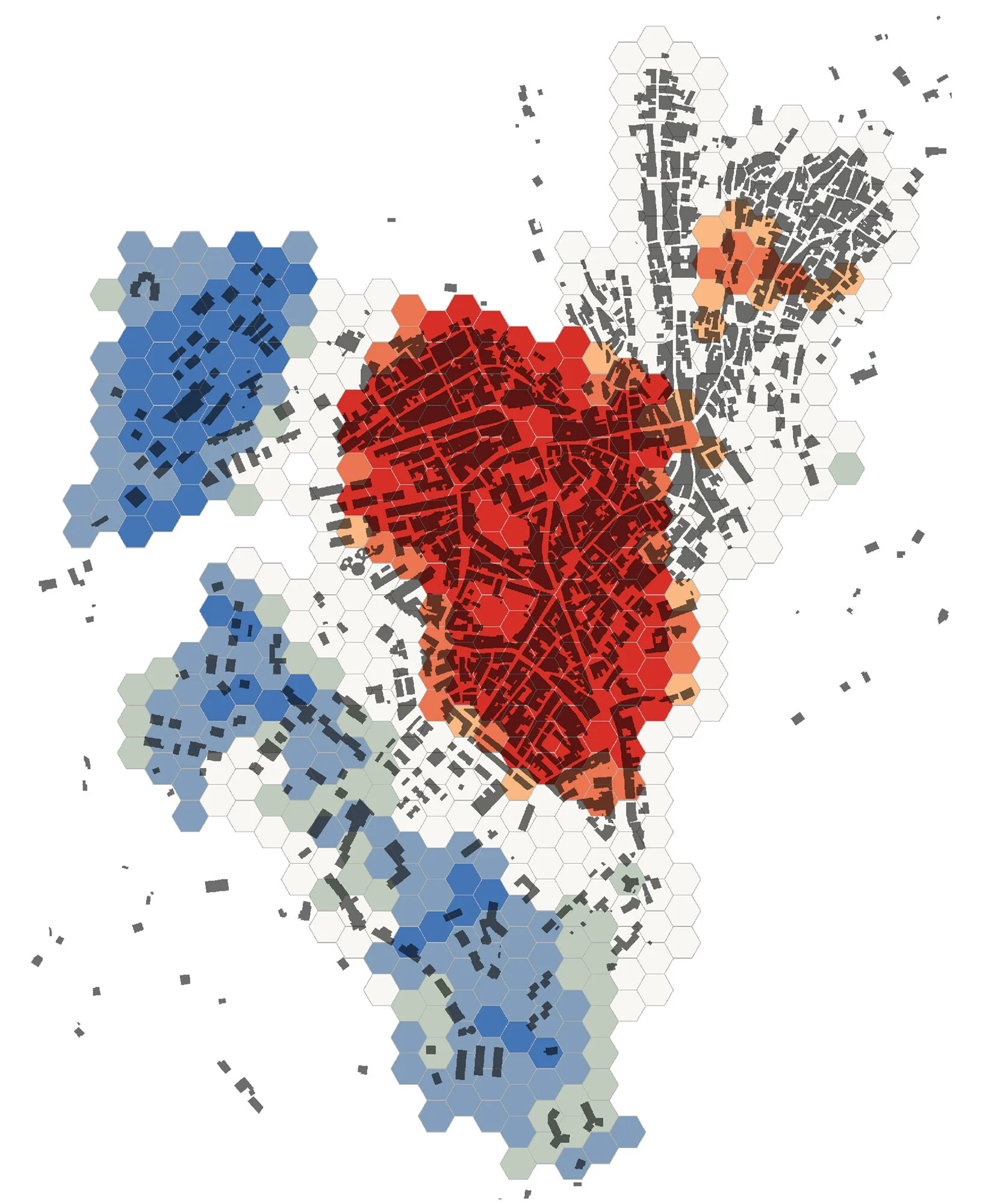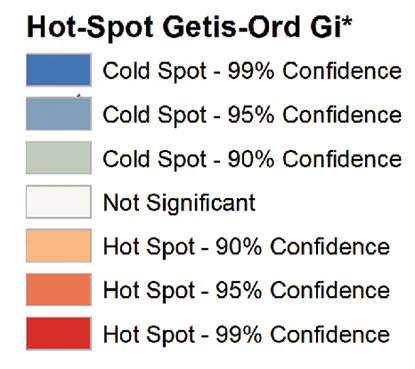
Uncovering Abandonment
Harnessing waste management data to map housing vacancy
According to a 2016 report by Legambiente, a third of Italy’s rural towns are threatened by depopulation and even extinction. Although periods of population decline have always been present throughout urban history, the study of urban shrinkage as a natural pattern of urban development has been somewhat neglected within the urban and regional planning debate. Furthermore, the effectiveness of place-based policies to address these issues is often undermined by the lack of granular data at the building scale. This makes it hard for overarching policies to translate into concrete and monitorable actions; be they adaptive reuse incentives, targeted demolitions, etc.
liminal’s investigation employed a series of spatial statistics on a novel dataset (solid waste tax records) in the town of Aidone to advance a more granular understanding of how depopulation affects the built environment. More specifically, the study attempted to shed light upon the distribution patterns of vacant dwellings, in order to understand whether the abandonment of housing units in Aidone is related to the approximate age of construction of buildings.
Partners
Comune di Aidone
MIT Department of Urban Studies & Planning
Location
Aidone, EN
Sicily
Status
Complete (2019)
Territorial Abandonment
According to a 2016 report by the Agency of Territorial Cohesion, in the next 50 years 1,794 Italian municipalities may be left deserted. Almost 4.5 million people currently live in these marginal areas that occupy approximately 30.6% of Italian national territory.
Aidone, A Symptomatic Case
liminal’s work in Aidone is framed within a series of spatial parameters developed by the National Strategy for Inner Areas, ensuring the methodologies developed can help advance a broader national assessment of vacant dwellings distribution. liminal’s investigation demonstrates that urban footprint data can be employed to identify a series of towns where the likelihood of finding vacant dwellings is maximized.
Population (<5,000)
Peripherality Index
Urban Footprint (ha)
Population Decline
A Town Atop the Monti Erei
The town of Aidone is a 4,889 residents settlement located in Sicily’s Enna province at 600m above sea level. Thanks to a flourishing agricultural economy and a profitable sulfur-mining sector, Aidone came to have a population of 10,000 residents in 1951. However, since the ’60s the town has been witnessing an inexorable demographic decline.
Vacancy Hotspots
liminal’s research employed anonymized waste management tax records to spatialize housing usage types across Aidone. Through a geocoding process, liminal mapped housing units without permanent residents, such as temporary or secondary homes, vacant properties, etc.
A spatial statistic algorithm–Getis-Ord Gi*–demonstrated that abandonment is not a randomly distributed phenomenon, but rather tends to form statistically significant clusters in the historic urban core of Aidone.
A Challenge for Both Historic Centers & Peripheries
The exodus from historic urban centers to peripheral areas since the 1950’s is a well-documented phenomenon that characterize settlements like Aidone, as is celar by comparing urban footprint expansion during this period to population decline.
liminal’s work shows that Aidone finds itself in a different situation today. More than 46% of empty dwelling square-meters belong to buildings constructed between the 1950’s and 1990’s, mainly in the western peripheries of the town. These findings illustrate that although vacant dwellings are mostly concentrated in the historic center, the overall housing surplus (measured in square-meters of vacant dwelling) is almost equally distributed between buildings built in the 19th-century and after the 1950’s.












